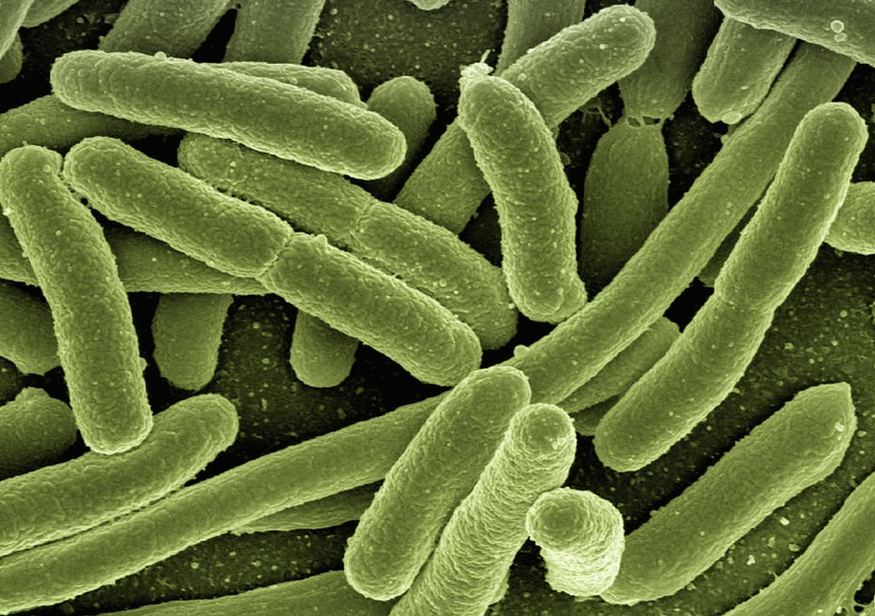Studies of antagonistic effect between Lactobacillus sakei on Escherichia coli, Listeria monocytogenes and Staphylococcus aureus
DOI:
https://doi.org/10.20873/jbb.uft.cemaf.v3n1.portellaKeywords:
Antimicrobial activity, complex substrates, surface responseAbstract
The antimicrobial activity of a commercial probiotic culture, Lactobacillus sakei(ATCC 1521) at following
concentrations (30, 42, 60, 78 and 90 μg/ml, 105 - 107UFC/mL), temperatures of interaction (4, 10, 20, 30, 37 °C) and initial pH (3.5, 4.0, 4.5, 5.0 and 5.5) were tested against three foodborne pathogens, Escherichia coli, Listeria monocytogenesand Staphylococcus aureus. The antagonistic effect of the probiotic culture in vitro was performed by liquid microdilution method. The results indicated that the inhibitory substance present on a 24 hours culture broth could be an advantage when keeping the culture dominant during longer fermentations. For the highest lactic acid production, the incubation period of lactic acid bacteria (1.04 % v/v) was on MRS Broth in aerobic conditions, at 37 ºC/24 hours, which gave a minimum pH value of the supernatant (3.5). The data suggest that supernatant can have significant bacteriostatic activity against E. coli, L. monocytogenesand S. aureus, and may provide curedmeats with a degree of protection against this microorganism, particularly if employed with a combination of acid pH, and adequate refrigeration.
References
Box, G. E. P.; Hunter, W. G.; Hunter, J. S. (1978), Statistics for experimenters: An introduction to design, data analysis, and model building. In Bradley, R. A.; Hunter, J. S.; Kendall, D. G.; Watson, G. S. Eds., Wiley series in probability and mathematical statistics, Wiley, New York, 653p.
Brock, T. D.; Madigan, M. T.; Martinko, J. M.; Parker, J. (1994),Biology of Microorganisms. New Jersey: Prentice-Hall, 909p.
Cebeci, A. and Gurakan, C. (2003), Properties of potencial probiotic Lactobacillus plantarum strains, Food Microbiology,20, 511-518.
Chang, S. T.; Wu, J. H.; Wang, S. Y.; Kang, P. L.; Yang, N. S.; Shyur, L. F. (2001), Antioxidant activity of extracts from Acacia confusa bark and heartwood. Journal of Agricultural and Food Chemistry,49: 3420-3424.
Hugas, M.; Garriga, M.; Aymerich, T.; Monfort, J. M. (1993), Biochemical characterization of lactobacilli from dry fermented sausages.International Journal of Food Microbiology,18:107-113.
Hurst, A. (1983), Nisin and other inhibitory substances from lactic acid bacteria. In: BRANEN, A. L.; DAVIDSON, P. M. Ed. Antimicrobial in Foods. Marcel Deckker Inc., New York, USA, p. 327-351.
Jarvis, B. (1989), Statistical aspects of the microbiological analysis of foods. Elsevier Science Publishers, Amsterdam, The Netherlands.
Klaenhammer, T. R. (2001), Probiotics and prebiotics. In: Doyle, M. P.; Beuchat, L. R.; Montville, T. J. Food microbiology: fundamentals and frontiers. 2.ed. Washington: ASM, p. 797-811.
Koutsoumanis, K. P. and Sofos, J. N. (2005), Effect of inoculum size on the combined temperature, pH and aw limits for growth of Listeria monocytogenes. International Journal of Food Microbiology,104:83-91.
Man, J. C.; Rogosa, M.; Sharpe, M. E. (1961).A medium for the cultivation ofLactobacilli.Journal of Applied Bacteriology,23:130-5.
Parker, R. B. (1974), Probiotics: the other half of the antibiotics story.Animal Nutrition and Health, 29, 4-8.
Schillinger, U.; Lücke, F. K. (1990), Lactic acid bacteria as protective cultures in meat products.Fleischwirtsch, 70, 1296-1299.
Shah, N. P. (2000), Probiotic bacteria: Selective enumeration and survival in dairy foods. JournalDairy Science, v.83, p.894-907.
Silva, N.; Junqueira, V. C. A.; Silveira, N. F. A. (2001), Manual de métodos de análise microbiológica de alimentos. 2. ed. São Paulo: Livraria Varela, 317p.
Vandenberg, P. A. (1993), Lactic acid bacteria, their metabolic products and interference with microbial growth. FEMS Microbiology Reviews, 12:221-238.

Published
How to Cite
Issue
Section
License
Copyright (c) 2024 - Journal of Biotechnology and Biodiversity

This work is licensed under a Creative Commons Attribution 4.0 International License.
Authors who publish with this journal agree to the following terms:
Authors retain copyright and grant the journal right of first publication with the work simultaneously licensed under a Creative Commons Attribution License (CC BY 4.0 at http://creativecommons.org/licenses/by/4.0/) that allows others to share the work with an acknowledgement of the work's authorship and initial publication in this journal.
Authors are able to enter into separate, additional contractual arrangements for the non-exclusive distribution of the journal's published version of the work (e.g., post it to an institutional repository or publish it in a book), with an acknowledgement of its initial publication in this journal.
Authors are permitted and encouraged to post their work online (e.g. in institutional repositories or on their website) prior to and during the submission process, as it can lead to productive exchanges, as well as earlier and greater citation of published work (Available at The Effect of Open Access, at http://opcit.eprints.org/oacitation-biblio.html).


